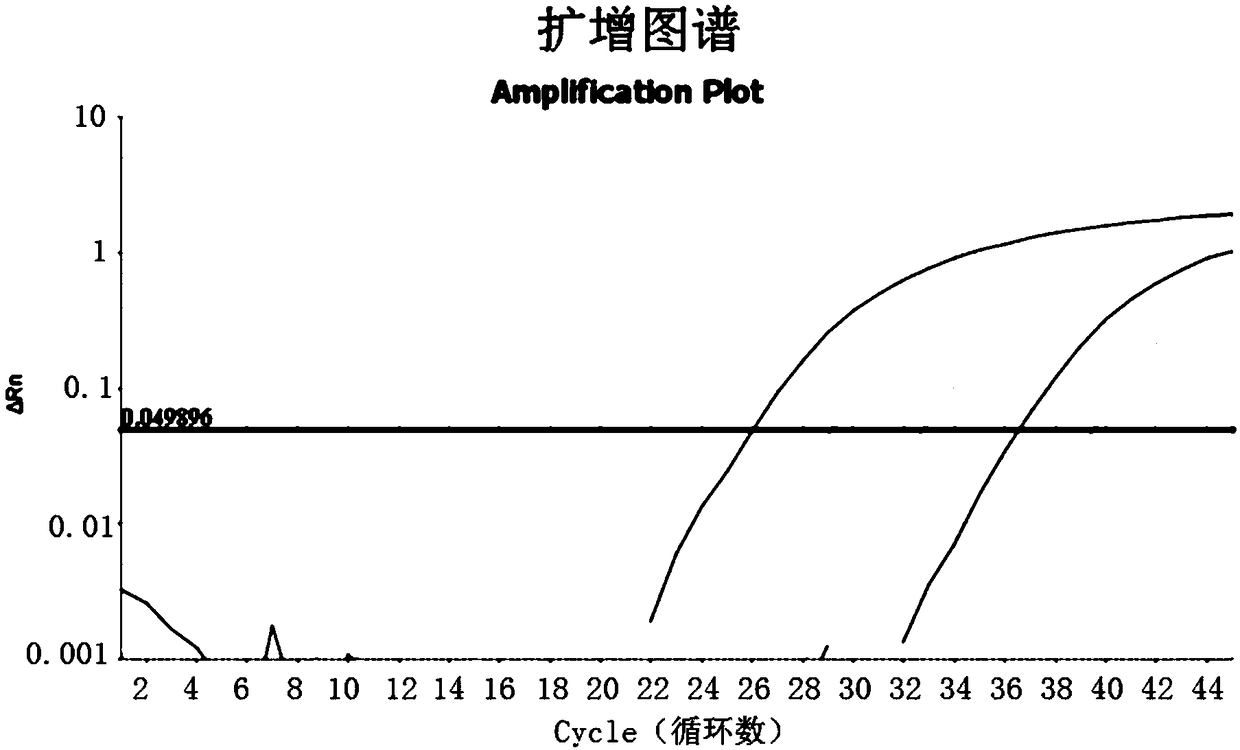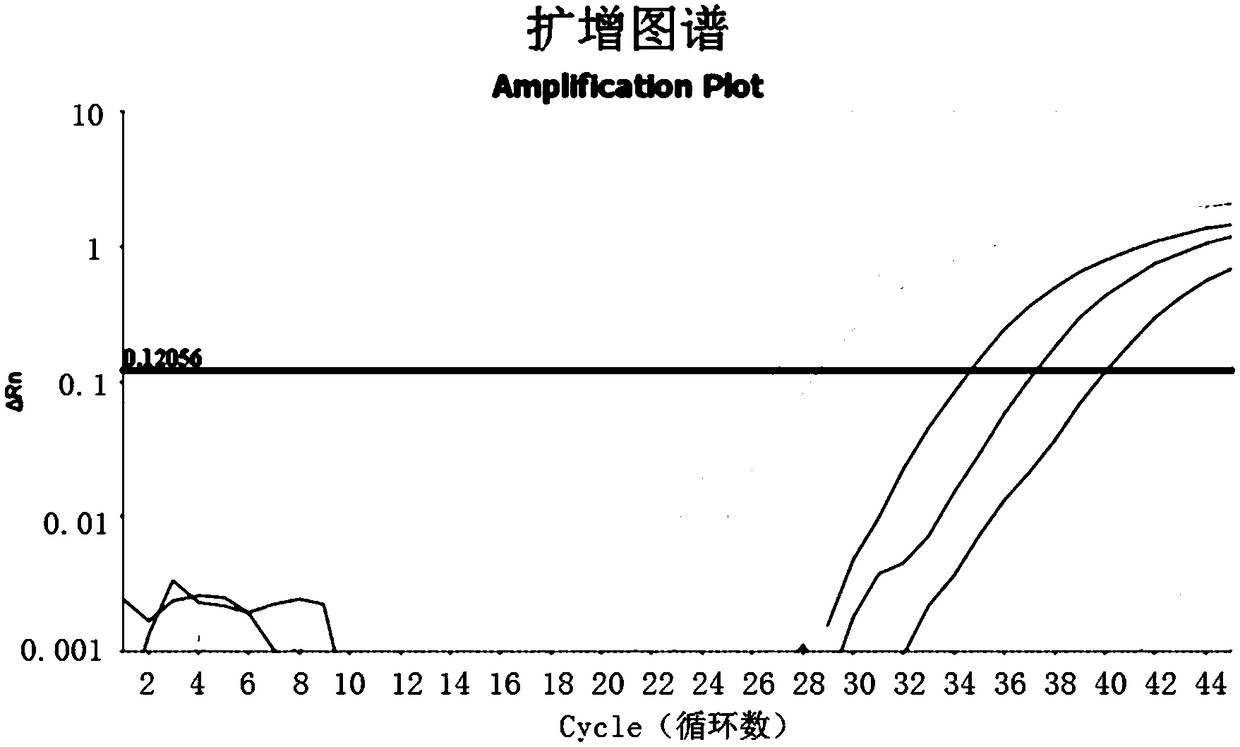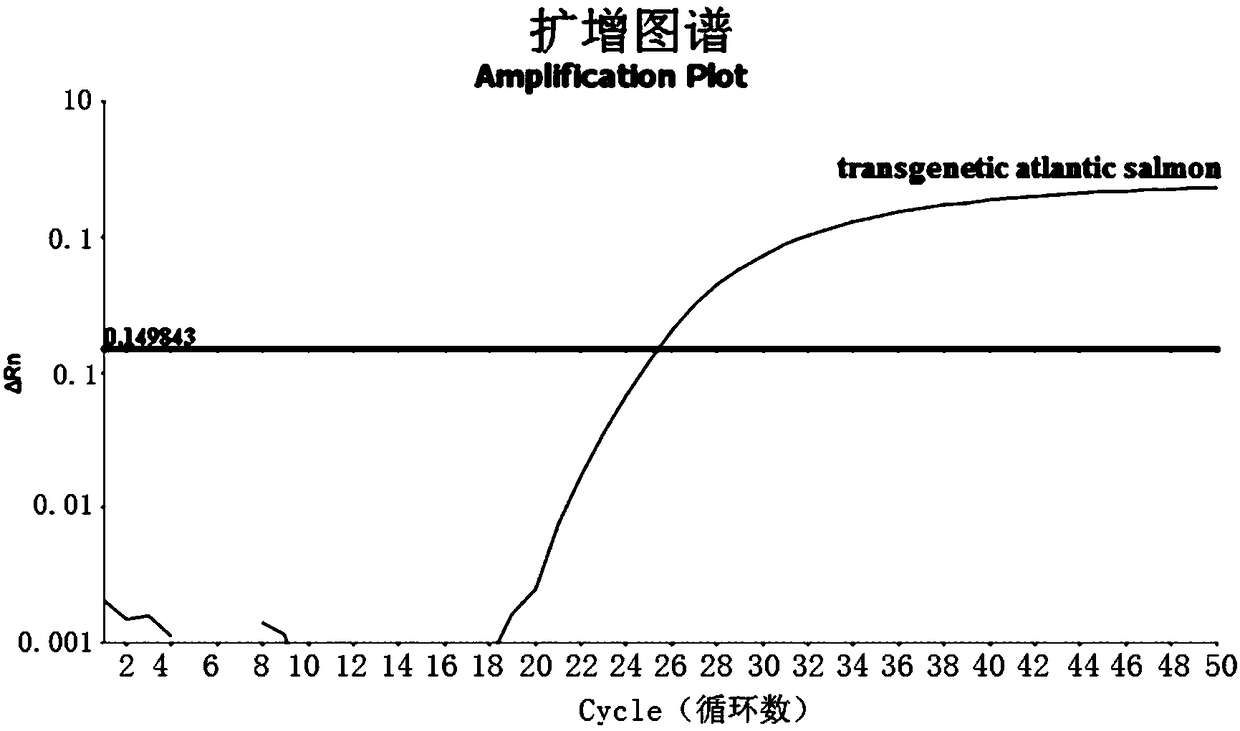Detection method for detecting exogenous gene components of transgenic salmon in animal products by real-time fluorescence quantitative PCR technology
A real-time fluorescence quantitative and exogenous gene technology, applied in the field of bioengineering, can solve problems such as cross-reactions easily, achieve the effects of protecting the right to know and the right to choose, wide application range, and good reproducibility
- Summary
- Abstract
- Description
- Claims
- Application Information
AI Technical Summary
Problems solved by technology
Method used
Image
Examples
Embodiment 1
[0038] Embodiment 1 The design of primer pair and probe
[0039] (1) Design of the first set of primer pairs and probes
[0040] According to the published transgenic salmon exogenous gene (Synthetic construct opAFP-GHc2growth hormone I precursor gene, complete cds) DNA sequence in NCBI (GenBank: AY687640.1), select the appropriate sequence fragments for primer probe design. The length of the target fragment for the exogenous gene components of the transgenic salmon is 139bp.
[0041] The sequence of Synthetic construct opAFP-GHc2growth hormone I precursor gene, completecds DNA sequence (GenBank: AY687640.1) is as follows:
[0042] CTTCGATCC AGATCTTTTCACTTCGATCTCCGATA ATTAATTAATTAATTAATTATTAATTAATTAAGTCTCAGCCACTGCAGGTCGTAAAA ATGGGACAAGTGTTTCT GCTGATGCCAGTCT TACTGGTCAGTTGTTTCCTGA GTCA AGGGGCAGCG (SEQ ID NO: 1).
[0043] The sequences of fluorescent PCR primer pairs and probes are as follows:
[0044] GMS-139bp-F: 5'-AGATCTTTTCACTTCGATCTCCGATA-3' (SEQ ID NO: 2);
[0...
Embodiment 2
[0067] The preparation of embodiment 2 test samples
[0068] After the animal samples were shredded and dried, they were ground into powder using a freeze grinder (SPEX 6850). Plant samples and samples for practical validation were directly ground into powder using a cryo-mill (SPEX 6850).
Embodiment 3
[0069] The extraction of embodiment 3 DNA
[0070] DNA from animal samples was extracted using the Animal Genome Extraction Kit (Tiangen Biochemical Technology Co., Ltd.; catalog number: DP323), and DNA from plant samples was extracted using the Plant Genome Extraction Kit (Tiangen Biochemical Technology Co., Ltd.; catalog number: DP305). Genetic Plant Feed Genome Extraction Kit (Tiangen Biochemical Technology Co., Ltd.; catalog number: DP323) was used to extract DNA from mixed samples and actual verification samples. For the extraction method, refer to the kit operation manual for details. The DNA solution was stored at -20°C for later use.
PUM
| Property | Measurement | Unit |
|---|---|---|
| Sensitivity | aaaaa | aaaaa |
Abstract
Description
Claims
Application Information
 Login to View More
Login to View More - R&D
- Intellectual Property
- Life Sciences
- Materials
- Tech Scout
- Unparalleled Data Quality
- Higher Quality Content
- 60% Fewer Hallucinations
Browse by: Latest US Patents, China's latest patents, Technical Efficacy Thesaurus, Application Domain, Technology Topic, Popular Technical Reports.
© 2025 PatSnap. All rights reserved.Legal|Privacy policy|Modern Slavery Act Transparency Statement|Sitemap|About US| Contact US: help@patsnap.com



